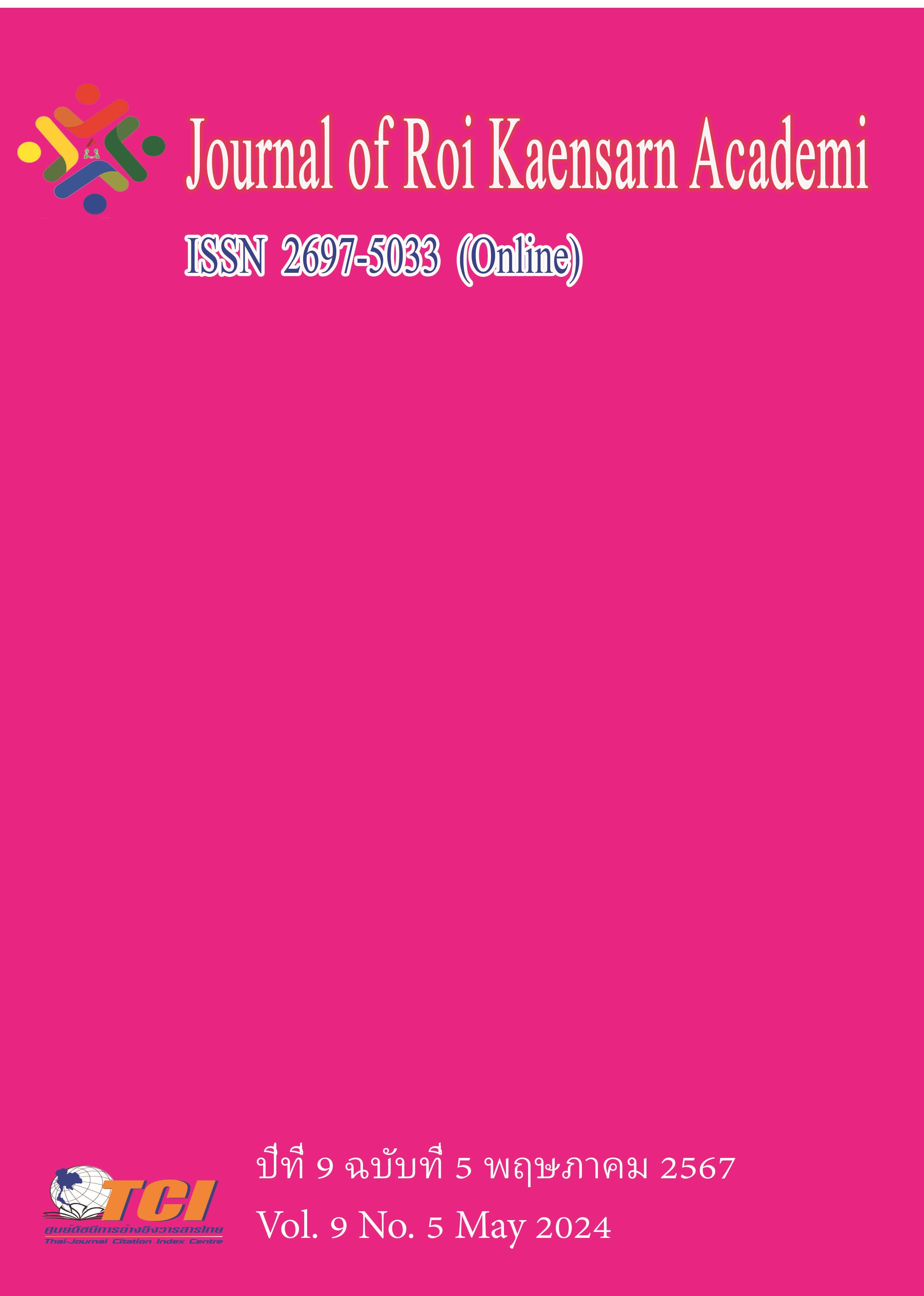The Analysis of Zhang Zhao’s Piano Works
Main Article Content
บทคัดย่อ
The research ‘The Analysis of Zhang Zhao’s Piano Works’ This qualitative research study has two objectives: 1. To investigate the historical development of Zhang Zhao piano works. 2. To analyze the selected pieces of Zhang Zhao 's piano works. The main sources are document data and field work data. Field data were obtained through observations and interviews.
The results show that:
1. Over time, the historical development of Zhang Zhao's piano work has changed a lot. In the Early Period (1980s to the 1990s), the traditional Chinese style was the center of his creation. In the Middle Period (Westernization), around the 1990s-2000s), Western music and Zhao's Chinese cultural background had a significant impact on his style development. Now, in the Late Period (Mature Period), from 2000s to date), Zhang Zhao's style has changed. He incorporated these concepts into modern music and learned natural inspiration.
2. By analyzing the characteristics of Zhang Zhao's piano works by the structure, melody, rhythm, and harmony of the two piano works, “Pi Huang” and “The Three Songs of Foothills”, The researcher have found that the stylistic characteristics of Zhang Zhao's works have changed, no matter from the structure used, the melody composed, the rhythm, or the harmonic modes used, from the beginning of the Early Period when he only wanted to circumvent Western compositional techniques, perfectly highlighting the Chinese national characteristics and culture, emphasizing on the imitation of the Chinese instrumental sound, and heavily adopting the national style to compose piano pieces. Then in the Middle Period, he began to adopt western compositional structures and techniques, and tried to integrate them with the Chinese pentatonic scale to show the emotions and feelings in Zhang Zhao's heart. All these changes show Zhang Zhao's inner struggle and transformation, and also reveal that Zhang Zhao's works are characterized by his strong Chinese background, the penetration of Western influences, as well as his Chinese heritage, Chinese culture and art, and the inner feelings brought to him by nature.
Article Details
เอกสารอ้างอิง
Carr, D. (2004). Music, meaning, and emotion. The Journal of Aesthetics and Art Criticism. 62 (3), pp.225-234.
Chernoivanenko, A. D. (2019). Musical and instrumental foundations of modern composition techniques. Вісник Національної академії керівних кадрів культури і мистецтв, (2), 444-448.
Frith, S. (1996). Music and identity. Questions of Cultural Identity. 1 (1), 108-128.
Guangjian, Z. (2020). Reflection of national musical traditions of South China in the piano works of Zhang Zhao. European Journal of Arts. (2), 37-42.
Gu, S. (2020). The Influence of Chinese Culture, Nature, and Western Music in Pi Huang (1995) and Nature No. 1 (2019), Piano Solos by Zhao Zhang (Doctoral dissertation, The University of Arizona).
Guangjian, Z. (2020). REFLECTION OF NATIONAL MUSICAL TRADITIONS OF SOUTH CHINA IN THE PIANO WORKS OF ZHANG ZHAO. European Journal of Arts. (2), 37-42.
Huang, Z., Rattanachaiwong, N., & Li, J. (2023). Exploring the Modern Chinese National Music Style Reflected in Zhang Zhao's Piano Work" Pi Huang". Journal of Education, Humanities and Social Sciences. 20, 235-239.
Jinjin, H., & Isaiah, L. C. T. (2020, March). The Development of' Chinese Style' Piano Music Influenced by Chinese Traditional Musical Instrument. In Proceedings of the 2nd International Conference on Interdisciplinary Arts & Humanities (ICONARTIES). https://papers.ssrn.com/sol3/papers.cfm?abstract_id=3800574
Kondoh, A. (2022). Diversifying Piano Literature: East Asian Music for Piano Study and Performance in the United States. Online. Frome: https://researchrepository. wvu.edu/etd/11554/
Li Z. (2022) Analysis of the creative characteristics and performance of Zhang Chao's "Three Songs of Southern Yunnan Mountains. Sichuan Normal University.
Liang, C. (2022). The Contrasting Elements in Zhao Zhang’s Nature No. 1 and Pi Huang (Doctoral dissertation, Shenandoah University). Online. From: https://www.proquest.com/openview/b9dbc7763ce21f7cc79bb9de48fd3408/1?pq-origsite=gscholar&cbl=18750&diss=y
Lu-Ting, H., & Kuo-Huang, H. (1982). On Chinese scales and national modes. Asian music. 14 (1), 132-154.
Moving Classics TV. (2019). Zhang Zhao. Online. From: https://movingclassics.tv/ classicpeople/zhang-zhao/
Lin, E. P. (1989). Development of piano in China (Doctoral dissertation, University of Tasmania). Online. From: https://core.ac.uk/download/pdf/33327494.pdf.
Qian, Y. U. (2014). Impressionistic Music Features in Chinese Piano Works. Cross-Cultural Communication. 10 (6), 195.
Rau, & Hofmann. (2018). Cross-Cultural Design. Applications in Cultural Heritage, Creativity and Social Development. Springer International Publishing.
Sagall, S., & Sagall, S. (2021). The Modernist Styles. MUSIC and CAPITALISM: Melody, Harmony and Rhythm in the Modern World. 237-330.
Sama, Z. (2022). Zhang Zhao ( 张朝 ) - Pi Huang (1995). YouTube. https://www.youtube. com/watch?v=5_pRrQ9NzqA.

